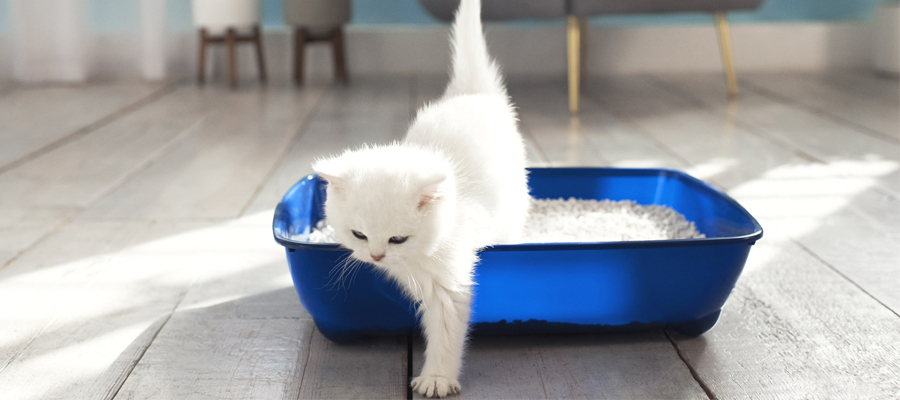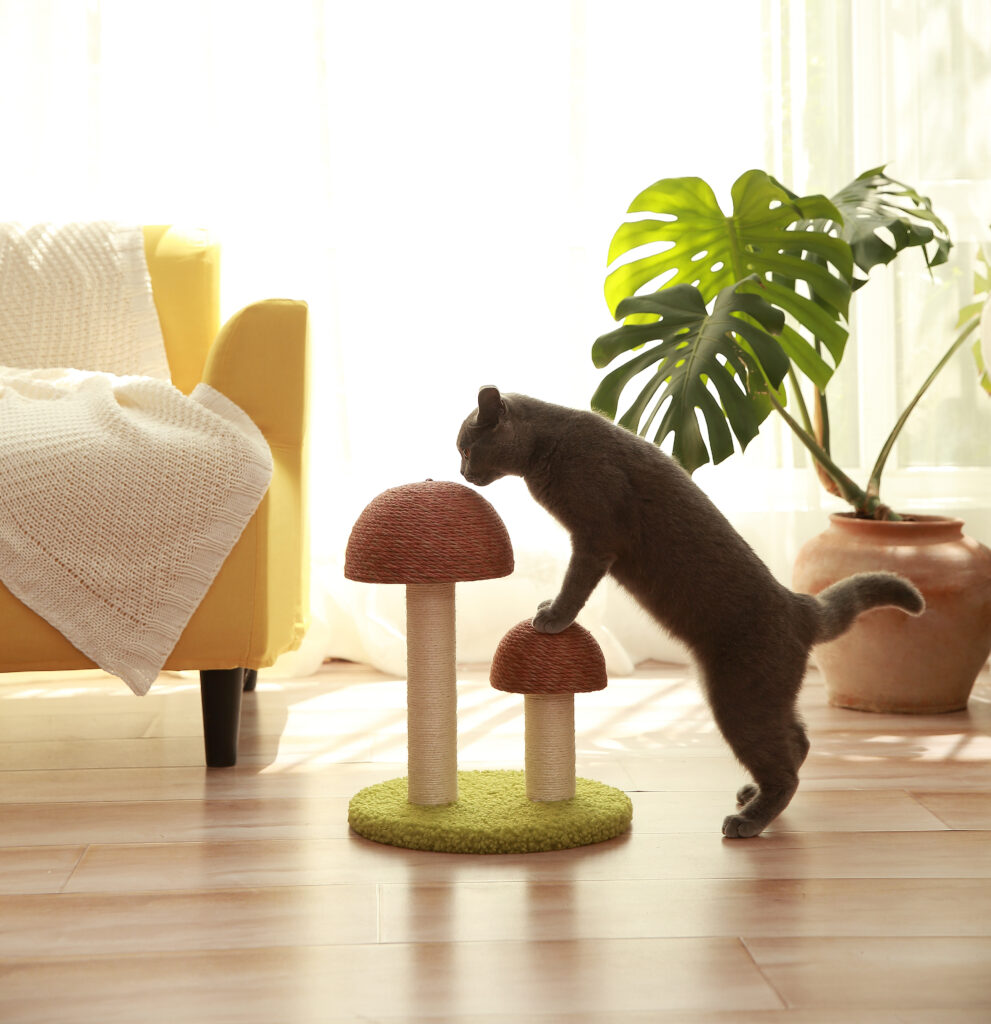In this comprehensive guide, we will delve into the essential factors to consider when choosing cat litter, explore the different types of cat litter available, and provide tips to make your cat’s litter box routine as seamless as possible. By the end of this article, you will be equipped with the knowledge and confidence needed to select the perfect cat litter that suits both your cat’s preferences and your household needs.
Consider Your Cat’s Preferences:
Understanding your cat’s preferences is the first step in the quest for the ideal cat litter. Just like humans, cats have individual tastes, and what works for one feline may not be suitable for another. Here are some factors to consider regarding your cat’s preferences:
- Texture: Some cats prefer finer, sand-like textures, while others may like coarser, grainy textures. Observing your cat’s behavior in the litter box can provide valuable insights into their texture preferences.
- Clumping vs. Non-Clumping: Clumping cat litter forms solid clumps when it comes into contact with moisture, making it easier to scoop out waste and maintain a clean litter box. Non-clumping varieties are often made from clay, sand, or silica gel, and they absorb moisture without forming clumps. Your cat’s preference for clumping or non-clumping litter can influence your choice.
- Scented vs. Unscented: Some cats prefer unscented litters, as strong fragrances can be overwhelming to their sensitive noses. Others may not mind scented options. Pay attention to your cat’s reaction to scents when making your selection.

Types of Cat Litter:
- Clumping Litter: Clumping cat litter is one of the most popular choices among cat owners. It forms solid clumps when it comes into contact with moisture, making it easy to scoop out waste and maintain a clean litter box. This type of litter helps control odors effectively and reduces the frequency of complete box changes. It’s a convenient option for busy cat owners who want to minimize the mess and odor.
- Non-Clumping Litter: Non-clumping cat litter is typically made of clay, sand, or silica gel. It absorbs moisture without forming clumps, making it easier to scoop out waste. While it may require more frequent box changes compared to clumping litter, it is often less expensive and can be a suitable choice for some cats.
- Natural and Biodegradable Litter: Natural litters, such as those made from materials like corn, wheat, or pine, are gaining popularity due to their eco-friendly nature. These litters are often biodegradable, which means they break down naturally and are less harmful to the environment. Natural litters can also have less dust, making them a good choice for cats with allergies or sensitivities.
- Crystal Litter: Crystal cat litter is made of silica gel crystals that absorb moisture and control odors effectively. It is known for its low dust and long-lasting properties. However, some cats may not like the texture of crystal litter.
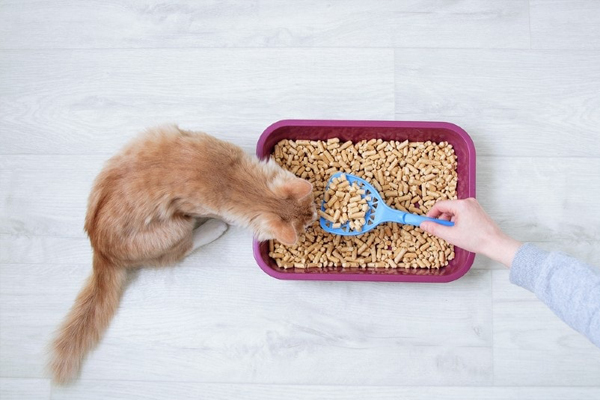
Odor Control:
One of the top concerns for cat owners is controlling litter box odors. The effectiveness of odor control can vary among different types of cat litter. Here are some considerations for keeping your home smelling fresh:
- Clumping and Crystal Litters: Clumping and crystal litters are known for their superior odor control capabilities. They absorb moisture and lock in odors, preventing them from spreading throughout your home.
- Scented Litters: Some cat litters come with added fragrances designed to mask odors. While these can be effective in the short term, they may not be suitable for cats with scent sensitivities or those who prefer unscented options.
- Regular Scooping: Regardless of the type of litter you choose, regular scooping is essential for maintaining a fresh-smelling litter box. Aim to scoop waste daily and change the entire litter periodically to prevent odors from becoming overpowering.
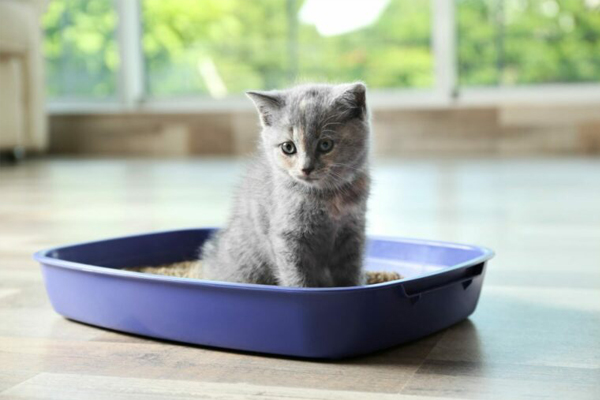
Dust and Allergies:
Dust and allergies are important considerations when selecting cat litter, as they can impact both your cat’s and your own respiratory health. High-dust litters can exacerbate allergies and respiratory issues. Here’s what you need to know:
- Low-Dust or Dust-Free Litters: If you or your cat have allergies, consider low-dust or dust-free litters. These options produce minimal airborne particles, reducing the risk of allergic reactions and respiratory discomfort.
- Natural and Biodegradable Litters: Natural litters are often less dusty than traditional clay litters, making them a suitable choice for sensitive individuals. They are made from organic materials and contain fewer synthetic additives.
- Proper Ventilation: To minimize dust exposure, ensure your cat’s litter box is placed in a well-ventilated area. Adequate airflow can help disperse dust and maintain a healthier environment for both you and your cat.
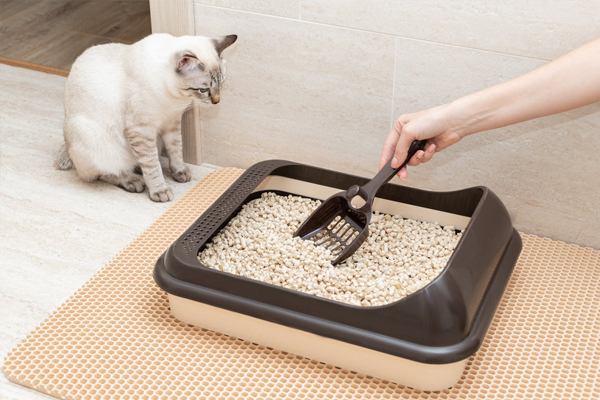
Cost and Sustainability:
Budget considerations and environmental impact play a significant role in choosing cat litter. Here are some factors to keep in mind:
- Budget-Friendly Options: Traditional clay-based litters are often more budget-friendly compared to specialty litters. If cost is a concern, you can find high-quality, affordable options in both clumping and non-clumping varieties.
- Eco-Friendly Choices: Many cat owners are increasingly concerned about the environmental impact of cat litter. Natural and biodegradable litters, such as those made from corn, wheat, or pine, are more sustainable and biodegrade more easily than traditional clay litters. They are a responsible choice for eco-conscious pet owners.
- Longevity: Some specialty litters, like crystal litters, can be more expensive upfront but last longer because they require less frequent changing. Consider the long-term cost of litter when making your decision.
Choosing the right cat litter is a decision that should prioritize your cat’s comfort, your convenience, and your budget. By considering your cat’s preferences, exploring the various types of cat litter available, understanding the importance of odor control and dust levels, and factoring in sustainability and cost, you can make an informed choice. Ultimately, the goal is to provide your feline friend with a clean, pleasant, and healthy litter box experience while maintaining a harmonious home environment. With the right cat litter, you can achieve just that, ensuring the happiness and well-being of your beloved pet.

